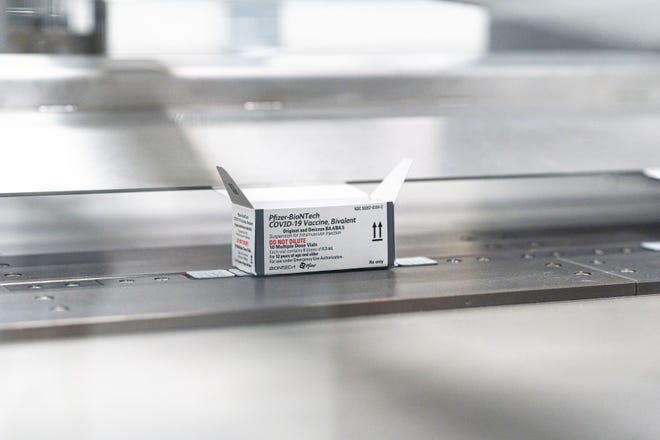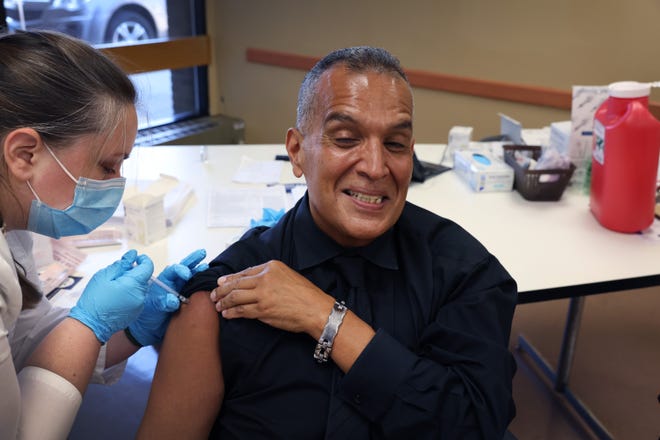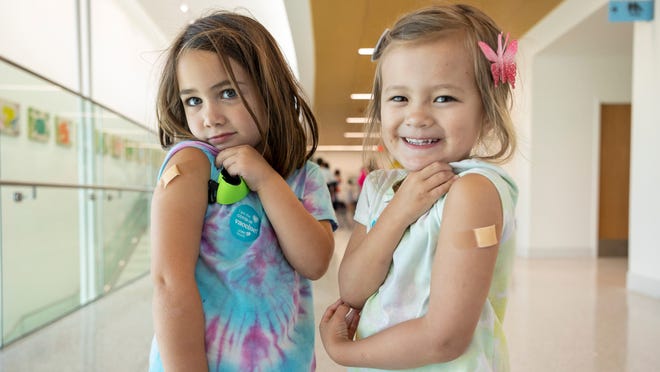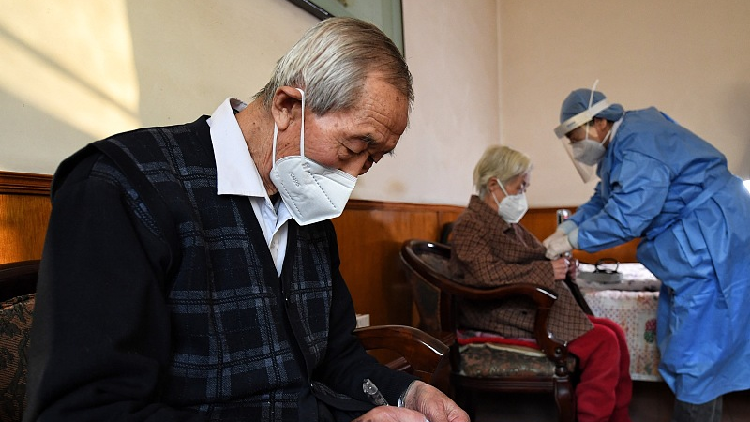COVID booster targeting BA.5 variant is safe, Pfizer-BIoNTech say

Pfizer and its collaborator BioNTech have shown that their new COVID-19 booster does what they hoped it would, with the same safety and side effect profile as earlier shots.
In a study released early Friday, the pair found that adults mounted a strong immune response to the new booster, which is targeted to both the original virus and the BA.4 and BA.5 variants.
In a separate report on Friday, results from the first 22 million doses of the Pfizer-BioNTech and Moderna bivalent boosters confirm that adverse reactions are rare and no different than with earlier boosters, according to the Centers for Disease Control and Prevention.
Previous studies of the bivalent booster revealed safety and immune data only in rodents and among people 7 days after the shot.
Now, at 30 days, Pfizer and BioNTech say the fourth shot boosts levels of neutralizing antibodies against the BA.4 and BA.5 variants 13-fold in adults 55 and older and nearly 10-fold in younger adults. People who received a shot targeted solely at the original virus saw a 3-fold increase in neutralizing antibodies against those variants.
Unfortunately, as many had feared, the BA.4 and BA.5 variants are now shrinking in importance. And it’s not clear how well boosters will prevent infection with the newer variants.
BA.5, which has caused the vast majority of COVID-19 infections since early July, now accounts for just under 50% of infections, according to CDC data. BA.4, which is identical to BA.5 in the area targeted by the vaccine, has never accounted for more than about 5% of infections.
One variant that’s now growing exponentially in the U.S., called BQ.1.1, is “very troublesome,” according to Pei-Yong Shi, associate chief research officer and vice president for research innovation at the University of Texas Medical Branch at Galveston.
WHICH COVID-19 BIVALENT BOOSTER SHOULD I GET, AND WHEN:What you need to know.

“Whether the bivalent vaccine will work against this in terms of protection in the United States — the answer to that is I’m not quite sure,” he said. People who have been boosted with the bivalent shot have some neutralizing antibodies against BQ.1.1, research he posted Wednesday shows, “but it’s pretty low.”
The immune system also has other tools to fight off disease, Shi said, including other antibodies and T cells. It’s not clear yet whether those will be enough in the face of new variants to fully protect people who have been vaccinated or previously infected.
But Shi said, there’s no doubt that the booster can play a role in preventing the spread of COVID-19 this winter.
Some people had been uncomfortable with the bivalent booster because testing had only been completed in rodents, not people before it was authorized and became available.
Federal officials said they were comfortable offering the bivalent booster without human data because the same process is typically followed with the annual flu vaccine, where minor changes are only tested for safety and effectiveness in animals before being offered to people.
Also, trials with bivalent boosters that targeted both the original virus and earlier variants had been shown safe in human testing.
In the new CDC data, of the first 22 million people to receive the bivalent booster, more than 220,000 participated in the government’s v-safe program, which tracks responses to vaccination. Fewer than 1% reported receiving medical care in the week following vaccination and the most commonly reported side effects were fatigue and sore arm.
There were 5,542 reports to the government’s Vaccine Adverse Event Reporting System related to the bivalent booster, but more than 95% were considered “nonserious events,” and others may have occurred close to the vaccine in time, but not caused by the shot, such as a car accident.
NEW OMICRON VARIANTS:What you need to know to stay safe

Shi said his data on the bivalent booster’s effectiveness, along with similar results from Emory University, support what Pfizer and BioNTech found. “They all consistently show bivalent seems better than monovalent,” he said.
Whether that difference in effectiveness will prove meaningful in the real world — providing enough additional protection to justify the change to the vaccine — remains to be seen.
Experts expect another wave of infections to come soon, as a result of holiday travel, increasing time spent indoors in colder weather and the natural seasonality of coronaviruses. Last year’s winter surge with omicron started in early December and the year before, a surge began around Thanksgiving.
But this year won’t be as bad as previous years, predicted John Moore, a professor of microbiology and immunology at Weill Cornell Medicine in New York City.
“There won’t be a mass wave of deaths this winter. Not in vaccinated people,” he said.
TRACKING COVID-19:How many people have been vaccinated in the US?
Moore said it’s crucial for people’s immune systems to have seen the virus at least three times, through vaccines or a combination of vaccines and infection, particularly with an omicron variant.
“Anyone who’s not had a third shot I think is really running a risk of not just infection but severe disease and death,” Moore said. The bivalent booster will be most effective in someone who has already been exposed to omicron.
For people at higher risk, a fourth exposure is a good idea, said Moore, adding that he, his wife and their two adult children all received their fourth vaccine shots in the last few weeks.
“If you’re in a high-risk group, then absolutely, go and get it,” he said, as should people who are anxious about the virus. “If they’re worrying and having a booster can assuage their anxiety, that’s good enough justification.”
Contact Weintraub at kweintraub@usatoday.com
Health and patient safety coverage at USA TODAY is made possible in part by a grant from the Masimo Foundation for Ethics, Innovation and Competition in Healthcare. The Masimo Foundation does not provide editorial input.




